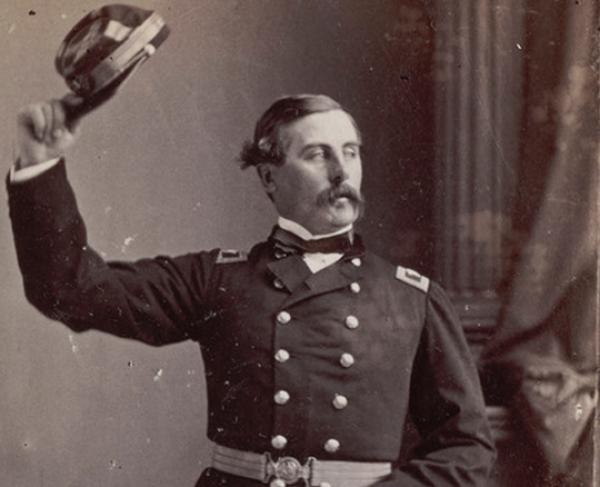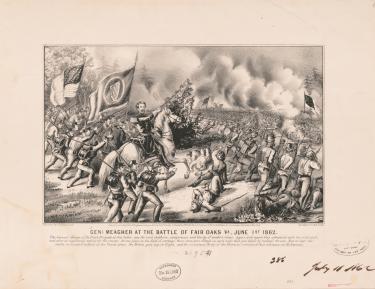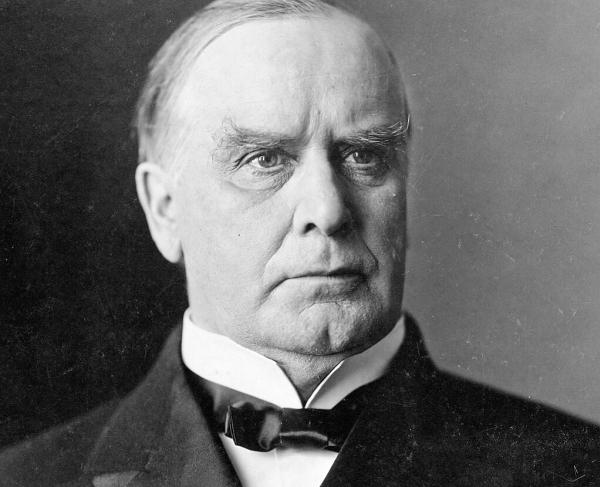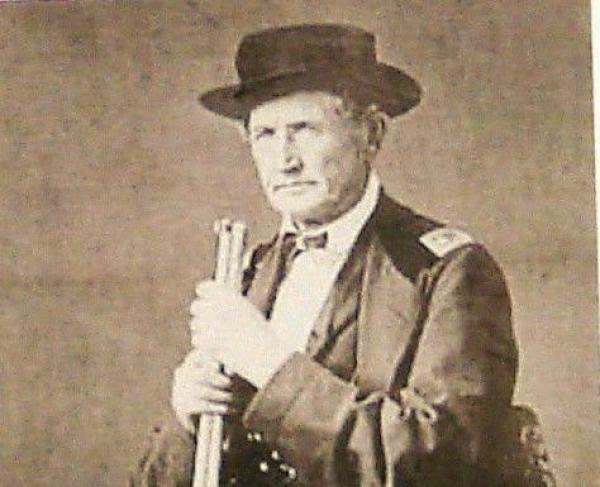Thomas Francis Meagher

Thomas Francis Meagher was born on August 3, 1823, in Waterford, Ireland. At eleven years old, Meagher’s family sent him to study with Jesuits at Clongowes Wood College in Dublin, Ireland. He then attended Stoneyhurst College in Lancashire, England, and graduated in 1843. After graduation, Meagher returned to Ireland to assist in the creation of an independent Irish Republic. In 1847, Meagher, along with three other Irishmen, traveled to France to study the French Revolution and formed the Irish Confederation. The Irish Confederation was an anti-British independence movement to form the independent Republic of Ireland. While in France, Meagher and his other compatriots were gifted the modern-day flag of Ireland, a tricolor flag, similar to France’s modern flag. In 1848, Meagher was captured for lecturing anti-British discourse in public. He was convicted of sedition against the British Crown and was sent to modern-day Tasmania, Australia, as punishment.
In 1851, Meagher made his escape to New York City and arrived in New York City in May of 1852. When he arrived, he was revered as a celebrity of Irish independence. The large Irish population living in New York City recognized him from newspapers coming out of Ireland of a young Irish revolutionary. While in the United States, Meagher studied law and journalism and founded a newspaper called The Irish News.
Leading up to the Civil War, Meagher had foreshadowed the impending war between the North and South of the United States. Before the firing on Fort Sumter, Meagher openly supported the Southern states due to his strong ties in the South. Meagher, besides working as a lawyer and journalist, was also a lecturer. Many of his lectures took place in the South, and his impression of Southerners was, “sober, intelligent, high-minded, patriotic, and kind-hearted.” He was also deeply connected to the Southern aristocracy and found more commonalities between them than his blue-collar Irish compatriots. His views of Southerners changed when President James Buchanan ignored Meagher’s request of a government position after Meagher helped Buchanan’s election in 1857. His change of heart also came when the Catholic Church supported the Union cause, which further shifted his mindset to support the Union. The final nail in the coffin for Meagher was the Confederate’s firing upon Fort Sumter on April 12, 1861. After Fort Sumter, Meagher began recruiting men through ads he posted in the New York Daily Tribune calling on all Irishmen to join the Union cause. On April 29, Meagher formed Company K of the 69th New York Regiment, serving as a captain.
Meagher had little time to train and prepare the company for battle because the other companies of the 69th were shipped to Washington on April 23. Racing to Washington, Meagher, and his company and trained until July 21, 1861. At the Battle of First Bull Run, Meagher’s Company K took heavy casualties. This was partially due to Meagher’s choice of uniform. Company K were Zouaves, which during the war meant that the company wore flashy and highly visible clothing that could be easily seen. At the First Battle of Bull Run, many units like Meagher’s were shot at by friendly fire and were disproportionately shot at due to their easily-spotted uniforms. During the battle, Meagher was knocked from his horse and was quickly picked up by a passing Union cavalry soldier who got him back to the 69th. While in the heat of battle, the flag bearer was killed, and Meagher took the flag and uttered, “Remember Frontenez!” which was a famous battle cry used by the Irish throughout the Civil War. The saying traces its roots back to the Battle of Fontenoy on May 11, 1745, where the Irish fought against the English, and the phrase served as a battle cry for the Irish. After the battle, Meagher returned to New York after a heated exchange with William Tecumseh Sherman that left Meagher humiliated by President Abraham Lincoln.
In September of 1861, Meagher began to recruit Irishmen to form a new Irish brigade. In December of 1861, President Lincoln authorized for Meagher to not only recruit Irishmen from other states but also soldiers in Ireland to persuade the Irish to train for an Irish revolution. Lincoln also promoted Meagher to Brigadier General for this new Irish Brigade. By early 1862, Meagher and the Irish Brigade marched with Major General George B. McClellan into the Peninsula Campaign, ready for battle.

In the Peninsula Campaign, Meagher led the Irish Brigade into battle at Seven Pines/Fair Oaks. During the battle, the Irish Brigade suffered heavy casualties. However, Meagher and the Irish Brigade were seen as heroes, distinguishing themselves as fierce fighters. After the battle, a drawing was made of him on his horse leading the Irish Brigade into battle which boosted his popularity in the Union and the Irish American community. After Fair Oaks, Meagher and the Irish Brigade fought at the Seven Days’ Battles distinguishing themselves once more as fierce fighters.
Meagher and the Irish Brigade moved to Sharpsburg, Maryland, in September of 1862 to fight at the Battle of Antietam. On September 17, Meagher and the Irish Brigade fought at the Sunken Road, suffering heavy losses totaling 540 men. During the battle, Meagher fell from his horse and was injured. While suffering severe casualties, Meagher and the Irish Brigade took the credit of winning the last push against Confederate forces at the Sunken Road.
Mere months later in December 1862, Meagher and the Irish Brigade fought at the Battle of Fredericksburg. On December 13, before the battle, Meagher visited each regiment within the brigade individually. Meagher instructed them to place sprigs of boxwood on their hats to symbolize their shared Irish heritage. Meagher remained in the rear of the line during the battle due to severe pain in his knee that slowed him down. He even ran away from battle to retrieve his horse because of his pain in order to properly lead the brigade. This led to major skepticism of Meagher’s ability to lead the Irish Brigade.
The months following Fredericksburg gave Meagher time to recuperate from his knee injury. Meagher resumed command of the Irish Brigade three days before the Battle of Chancellorsville. After low engagement with the enemy at the battle, Meagher resigned from his position on May 16, 1863. Another reason for his resignation was the refusal of the Union to raise more soldiers to fight, as the brigade shrunk from 4,000 men to a few hundred men from 1862 to 1863. Meagher once again returned to New York to lecture in public as he had done before the war.
On December 23, 1863, the Union Army rescinded Meagher’s resignation and assigned him to operate in the Western Theater of the war. Meagher was placed in charge of the Etowah District headquartered in Chattanooga, Tennessee, in September of 1864. On January 5, 1865, Meagher was relieved of his position in Chattanooga and was placed in charge of a division in the Army of the Ohio. When the Civil War ended, Meagher remained in the Army until May 15, 1865, and sought a career in politics.
After the Civil War, Meagher was appointed to Secretary of the Montana Territory and appointed to the acting governor of the territory. Meagher helped create the state of Montana’s first constitution, however, the vote for statehood failed in his lifetime.
In 1867, two years after the end of the war, Meagher was on a steamboat named the G.A. Thompson on the Missouri River traveling to Fort Benton. On the evening of July 1, 1867, Thomas Francis Meagher fell overboard and reportedly drowned in the Missouri River. His body was never recovered. The circumstances surrounding his death grew suspicion, and theories developed around his death of possibly being murdered.
Thomas Francis Meagher led a life of inspiration. Beginning as a young Irish revolutionary, Meagher helped in the creation of the modern Irish flag and rallying the Irish people to further grow independent from England. He assisted in the assimilation of the Irish people into American society by proving that the Irish are a “formidable race” as he called the Irish. He founded and led the famed Irish Brigade into battle as a proud Irish American. He moved further out west onto the frontier in which he became the acting governor. Meagher is revered by Irish and Americans alike, he served both of his countries with pride, courage, and valor.
Further Reading:
- The Immortal Irishman: The Irish Revolutionary Who Became an American Hero By: Timothy Egan
- The Irish General: Thomas Francis Meagher By: Paul R. Wylie
Related Battles
12,401
10,316


